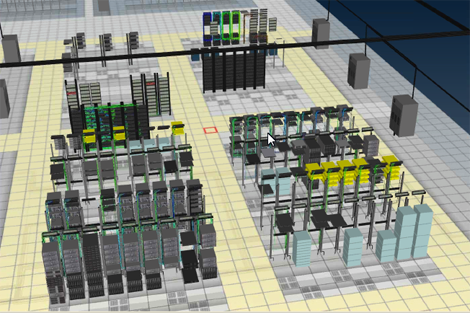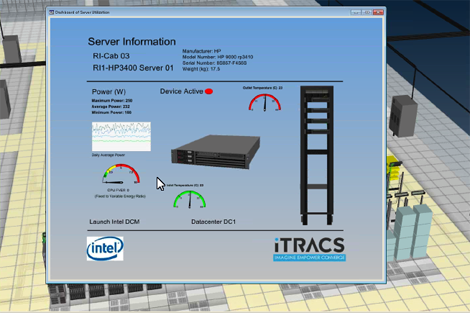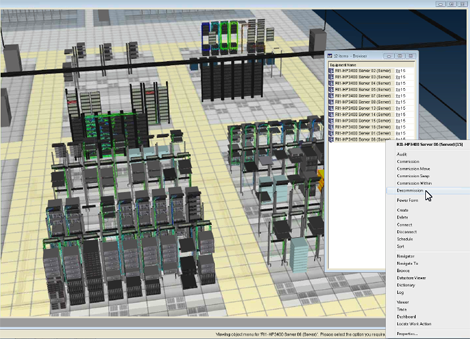Gary Bunyan is Global DCIM Solutions Specialist at iTRACS Corporation, a Data Center Infrastructure Management (DCIM) company. This is the 8th in a series of columns by Gary about “the user experience”. See Gary’s most recent columns: Boost Rack Densities Without Racking Your Brain, Unlocking the Data, and DCIM Simplified.
 GARY BUNYAN
GARY BUNYANiTRACS
Most customers I visit in my travels – especially customers with older data centers that have undergone tech refreshes and other substantive changes – will admit that when it comes to underutilized or unused servers (so-called “ghost servers”), they’re largely in the dark.
This is what they know – They know that a certain percentage of their servers, maybe as high as 15-20 percent, are either vastly under-utilized or literally unused. The servers aren’t running any useful applications. They’re draining power and consuming energy costs around the clock, without adding any value to the business. And they’re reducing capacity utilization by needlessly consuming rack space and other resources.
This is what they don’t know – They don’t know where those servers are!
Why are these power-draining assets called “ghost” servers? Because they are ghosts of what a productive server is supposed to be, no longer of any practical use to the business. Applications may have been migrated elsewhere to virtual servers, merger-and-acquisition activities may have shifted operations, or the servers may be at end-of-lease with applications removed. For whatever the reason, servers that were once useful are now dead weight. They need to be turned off.
Which is where DCIM comes in.
DCIM with Interactive 3-D Visualization lets you search through your entire physical ecosystem for any servers based on any criteria you put into the model – end-of-lease, business unit, model, CPU utilization, or any other drill down you’d like.
When you combine this forensics capability with the gathering of real-time data at the device level from Intel Data Center Manager, managers can unlock a whole new level of insight about what’s happening on the floor. Because you aren’t just unlocking faceplate or derated values – you're unlocking live power, environmental and CPU utilization information direct from each asset.
Which lets you locate and unplug those ghost servers – both safely and quickly.
Here's how it works:
Forensics: Finding The Servers
1) Using real-time data readings from Intel combined with a CPU Utilization search, confirm which servers have consistently low CPU and memory activity, indicating an absence of business applications. You find a host of servers (server pool) in which no business applications are running – the boxes are drawing power but essentially unused.
2) Run a Line of Business (LOB) search and it confirms that the business unit was dissolved months ago and the applications were migrated elsewhere.
3) Run an end-of lease report – you confirm these “ghost” servers are still 4 months away from lease expiration. But you aren’t about to wait 4 months.
4) Run a connectivity trace across the entire power chain to make sure there are no potential problems downstream if you unplug the servers. Because the DCIM software can visualize the entire web of inter-connectivity, a manager can see, navigate through, and manage the entire power chain as well as network connectivity. Confirm there are no potential issues with unplugging the servers.
So now it’s time to shut them down.
Resolution: Turning Off the Juice
5) Analyze the projected energy savings of decommissioning the servers using live power readings from Intel Data Center Manager, which tells you exactly how much power these devices are wasting
6) Run a summary report and submit it to your internal Change Board identifying power/cost savings and requesting permission to decommission.
7) Approval is granted. The power is turned off. The servers are decommissioned and placed in inventory for other business units to re-purpose.
The Bottom Line – Significantly More Capacity is Now Available to the Business
Finding and decommissioning ghost servers is relatively easy when you have the right DCIM tools and access to real-time data at the server level. And the benefits are very real:
Increased capacity – you now have more rack space, power, and network connectivity available to serve the business – and you didn't have to expand the data center footprint to acquire that capacity.
Lower energy consumption and costs – you’ve just saved a bunch of energy that was being needlessly wasted. Energy efficiency remains top-of-mind in every data center I visit.
Higher efficiency – you’re obtaining the same business output (services delivered to the business) at a lower overall power consumption.
Now that’s efficiency.
Images courtesy of iTRACS.
Industry Perspectives is a content channel at Data Center Knowledge highlighting thought leadership in the data center arena. See our guidelines and submission process for information on participating. View previously published Industry Perspectives in our Knowledge Library.







